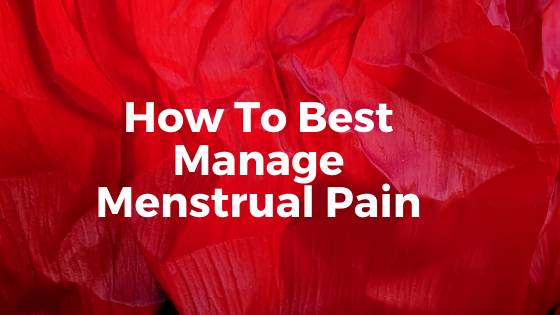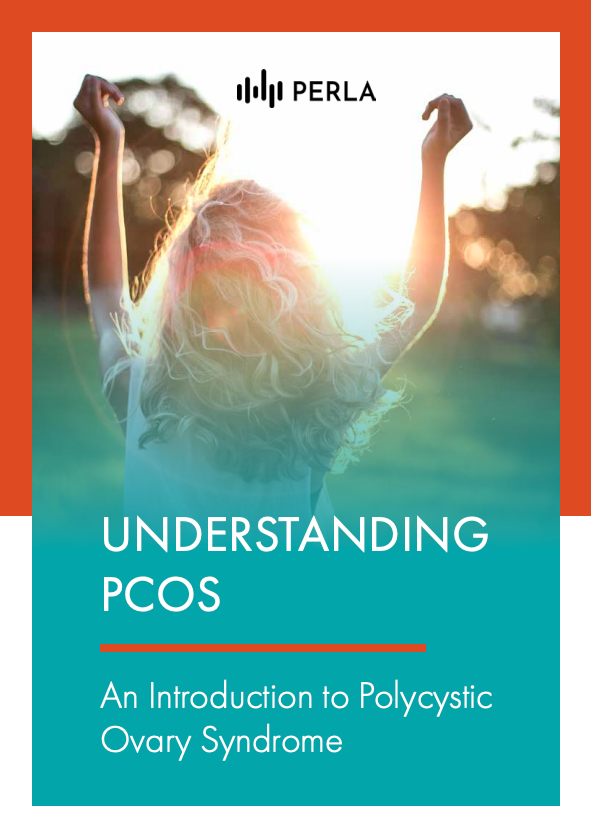The prevalence of menstrual pain (dysmenorrhea) varies, but studies showed that about 16% to 91% of women are affected, and 2% to 29% of them suffer from severe pain.1 It is so common that many women consider it to be a normal part of menstruation. However, it is also associated with various types of hormonal and gynecological disorders, including polycystic ovary syndrome (PCOS). Learn how to manage menstrual pain if you have PCOS.
Menstrual Pain and PCOS
Menstrual pain is a symptom, not a disease. The key to the effective management of dysmenorrhea is to make sure you get the right diagnosis. Some women with PCOS experience heavy periods with abdominal cramping. Keep in mind, however, that painful periods are not exclusive to PCOS. You may experience dysmenorrhea if you have endometriosis, uterine fibroids, adenomyosis, or pelvic inflammatory disease (PID).
If you are experiencing persistent period pain that interferes with your daily activities, especially if it comes with other symptoms such as heavy bleeding, anxiety or depression, and irregular menses, you should consult your primary care physician for evaluation.
Types of Menstrual Pain
There are two types of dysmenorrhea, depending on whether an underlying medical condition has been identified or not:2
Primary Dysmenorrhea
This type of period pain is sometimes called functional dysmenorrhea and is typically harmless. It occurs without any underlying gynecological disease. It is characterized by abdominal cramps, usually at the lower abdomen, that occur shortly before or during menstruation and fade after a day or two.3
Common symptoms of primary dysmenorrhea:
- Back and thigh pain
- Headache
- Nausea
- Diarrhea
- Vomiting
The role of prostaglandin
Current evidence suggests that an imbalance in uterine prostaglandin levels is the usual cause of cramping.4 Prostaglandins are hormone-like substances found in most body tissues. Different types of prostaglandins regulate several bodily functions.
For instance, the cells of the uterus release prostaglandins as menstruation begins, which stimulates contraction of the muscular walls of the uterus called the myometrium. This process is necessary for the expulsion of menstrual blood. But in women with dysmenorrhea, there is an increased in the production and release of prostaglandins, leading to abnormal uterine contractions and pain.5
Secondary Dysmenorrhea
You get a diagnosis of secondary dysmenorrhea if your period pain is associated with an identifiable disease.4 Findings from a physical examination may reveal pelvic abnormalities. A doctor may require a pelvic ultrasound if secondary menstrual pain is suspected.
Other symptoms of secondary dysmenorrhea:
- Pain during intercourse (Dyspareunia)
- Abnormally heavy or prolonged bleeding (Menorrhagia)
- Irregular periods
- Infertility
Common causes of secondary dysmenorrhea:
- Endometriosis
- Fibroids (myomas)
- Adenomyosis
- Endometrial polyps
- Pelvic inflammatory disease (PID)
- PCOS
- Ovarian tumors
- Use of an intrauterine contraceptive device (IUD)
- Sexually transmitted infection (STI)
Treatments for Menstrual Pain
Medications
Period pains associated with PCOS are usually treated with oral contraceptives and nonsteroidal anti-inflammatory drugs (NSAIDs) such as ibuprofen, naproxen, diclofenac, or mefenamic acid.
Hormonal contraceptives are used to treat both primary and secondary dysmenorrhea.6,7 Combined oral contraceptives interrupt the abnormal hormonal pattern in PCOS and regulate the cycle, which could result in the reduction of symptoms. It also reduces the amount of prostaglandins released by the uterus, which then reduces abdominal cramps.
NSAIDs inhibit prostaglandin synthesis. It is said to be most effective when started before the onset of menses.8 However, these medications may increase the risks of miscarriage and fetal malformations.9 If you are trying to get pregnant, your PCOS care team will help you choose pain relievers that are safe for pregnancy.
Levonorgestrel-releasing intrauterine system (LNG-IUS) releases synthetic progesterone into the uterine cavity for five years, thus preventing ovulation and thickening of the uterus. In non-randomized studies, it has shown to be useful in managing secondary dysmenorrhea.10
Lifestyle Changes
- Dietary changes: In one study, a low-fat vegetarian diet was associated with a significant reduction of symptoms, probably by impairing prostaglandin metabolism.11
- Exercise: may improve blood flow in the pelvis and reduce menstrual pain, but there are no high-quality studies to confirm results.
Alternative therapies
- Herbal products or dietary supplements such as thiamine, pyridoxine, magnesium, and fish oil may help reduce period pain, but more research is needed to confirm such claims.12 Always discuss with your doctor or healthcare provider before starting a new dietary supplement.
- Heat pads are a common traditional home remedy for period pain. One study found that the use of wearable heat wrap for 12 hours was more effective than placebo and as effective as ibuprofen.13
- Acupuncture can provide menstrual pain relief by exciting receptors or nerve fibers, which can block pain impulses.14 But the trials were too small to give conclusive results.
If you are suffering from menstrual pain that interferes with your daily activities and wellbeing, ask your doctor, PCOS care team or healthcare provider about it. Together with you, they can learn more about your specific situation and find a way to manage the pain that works for you and your body.
Sources
- Ju H, Jones M, Mishra G. The Prevalence and Risk Factors of Dysmenorrhea. Epidemiologic Reviews. 2013;36(1):104-113. doi:10.1093/epirev/mxt009
- American College of Obstetricians and Gynecologists. Dysmenorrhea: Painful Periods. Acog.org. https://www.acog.org/patient-resources/faqs/gynecologic-problems/dysmenorrhea-painful-periods. Published 2015.
- Smith R, Kaunitz A. Primary dysmenorrhea in adult women: clinical features and diagnosis. Alphen aan den Rijn: Wolters Kluwer; 2015.
- Proctor M, Farquhar C. Diagnosis and management of dysmenorrhoea. BMJ : British Medical Journal. 2006;332(7550):1134–1138. https://www.ncbi.nlm.nih.gov/pmc/articles/PMC1459624/. Accessed April 12, 2020.
- Zahradnik H, Breckwoldt M. Contribution to the pathogenesis of dysmenorrhea. Arch Gynecol. 1984;236(2):99–108.
- Proctor ML, Roberts H, Farquhar CM. Combined oral contraceptive pill (OCP) as treatment for primary dysmenorrhoea. The Cochrane Database of Systematic Reviews. 2001;(4):CD002120. doi:10.1002/14651858.CD002120
- Vercellini P, Trespidi L, Colombo A, Vendola N, Marchini M, Crosignani PG. A gonadotropin-releasing hormone agonist versus a low-dose oral contraceptive for pelvic pain associated with endometriosis. Fertility and Sterility. 1993;60(1):75–79. https://pubmed.ncbi.nlm.nih.gov/8513962/. Accessed August 29, 2020.
- Speer L. Dysmenorrhea. American Family Physician. 2005;71(2):285–291. https://www.aafp.org/afp/2005/0115/p285. Accessed August 29, 2020.
- Antonucci R, Zaffanello M, Puxeddu E, et al. Use of Non-steroidal Anti-inflammatory Drugs in Pregnancy: Impact on the Fetus and Newborn. Current Drug Metabolism. 2012;13(4):474-490. doi:10.2174/138920012800166607
- Baldaszti E, Wimmer-Puchinger B, Löschke K. Acceptability of the long-term contraceptive levonorgestrel-releasing intrauterine system (Mirena®): a 3-year follow-up study. Contraception. 2003;67(2):87-91. doi:10.1016/s0010-7824(02)00482-1
- Barnard ND, Scialli AR, Hurlock D, Bertron P. Diet and sex-hormone binding globulin, dysmenorrhea, and premenstrual symptoms. Obstet Gynecol 2000;95: 245-50
- Proctor ML, Murphy PA. Herbal and dietary therapies for primary and secondary dysmenorrhoea. The Cochrane Database of Systematic Reviews. 2001;(3):CD002124. doi:10.1002/14651858.CD002124
- Akin M, Price W, Rodriguez G Jr, Erasala G, Hurley G, Smith RP. Continuous, low-level, topical heat wrap therapy as compared to acetaminophen for primary dysmenorrhea. J Reprod Med. 2004 Sep; 49(9):739-45.
- Helms JM. Acupuncture for the management of primary dysmenorrhea. Obstet Gynecol. 1987;69:51–6.


